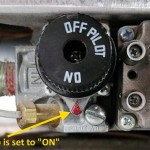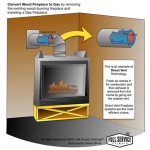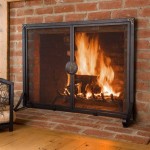The Importance of Maintaining a Fireplace Chimney Cleaning Log
Maintaining a fireplace chimney cleaning log is a crucial aspect of responsible homeownership, particularly for individuals who rely on fireplaces for heating or ambiance. This practice goes beyond simple record-keeping; it serves as a proactive measure to ensure the safety and efficiency of the fireplace system, mitigating potential hazards such as chimney fires and carbon monoxide poisoning. A comprehensive log helps track the chimney's condition, the frequency of cleaning, and any repairs or maintenance performed, providing a valuable reference for homeowners and chimney professionals alike.
A well-maintained chimney cleaning log can also be instrumental in demonstrating due diligence in the event of an insurance claim related to a chimney fire. Insurance companies may require evidence of regular maintenance to process claims, and a detailed log can serve as that evidence. Furthermore, it facilitates informed decision-making regarding future maintenance and repairs, helping homeowners budget and plan for necessary upkeep.
Understanding Creosote Buildup and its Significance
Creosote is a byproduct of burning wood in a fireplace. It is a dark, tar-like substance that accumulates inside the chimney flue as smoke cools and condenses. Composed of unburned wood particles, volatile gases, and moisture, creosote adheres to the inner walls of the chimney and, over time, forms a thick, highly flammable layer. The rate of creosote buildup depends on several factors, including the type of wood burned, the efficiency of the fireplace, and the burning habits of the homeowner.
Burning unseasoned or wet wood, for instance, generates more smoke and moisture, accelerating creosote accumulation. Restricted airflow within the fireplace, often caused by closed dampers or insufficient ventilation, also contributes to increased creosote deposition. Slow-burning fires, while aesthetically pleasing, tend to produce lower flue temperatures, which further promote creosote condensation. Different stages of creosote exist, ranging from a light, flaky consistency to a hard, glazed, and extremely dangerous form.
The primary danger associated with creosote buildup is the risk of chimney fires. When creosote ignites, it burns with intense heat, rapidly spreading throughout the chimney and potentially extending to the surrounding structure of the home. Chimney fires can cause significant property damage, injury, and even loss of life. Furthermore, creosote can corrode the chimney liner, compromising its structural integrity and increasing the risk of flue gas leakage into the living spaces of the home.
Regular chimney inspections and cleaning are essential to prevent creosote-related hazards. During an inspection, a qualified chimney sweep can assess the extent of creosote buildup and recommend appropriate cleaning methods. Cleaning involves the removal of creosote deposits using specialized brushes and tools, restoring the chimney flue to a safe and efficient condition.
Essential Elements of a Comprehensive Chimney Cleaning Log
A comprehensive chimney cleaning log should include several key elements to provide a complete record of the chimney's maintenance history. The date of each cleaning or inspection is paramount. This allows for tracking the frequency of maintenance and identifying any trends in creosote buildup or other issues. The name and contact information of the chimney sweep or company that performed the service should be recorded. This ensures accountability and facilitates follow-up communication if necessary.
A detailed description of the services performed is essential. This should include whether the service was a cleaning, an inspection, or a repair, and specify the areas addressed. For example, the log should indicate if the chimney was swept, if the smoke chamber was cleaned, or if any repairs were made to the flue liner or damper.
The log should include observations made during the inspection or cleaning. This might involve noting the amount and type of creosote present, any signs of damage or deterioration, or any unusual conditions encountered. Photographs can be a valuable addition to the log, providing visual documentation of the chimney's condition before and after cleaning or repairs.
The type and amount of wood burned since the last cleaning should be documented. This information helps to correlate burning habits with creosote accumulation rates. Noting whether seasoned or unseasoned wood was used is particularly important.
Finally, recommendations for future maintenance or repairs should be recorded in the log. This ensures that any identified issues are addressed in a timely manner, preventing further damage or safety hazards. The chimney sweep should provide a written report detailing their findings and recommendations, which should be kept with the chimney cleaning log.
Benefits of Consistent Record-Keeping
Consistent record-keeping through a well-maintained chimney cleaning log offers numerous benefits, extending beyond just fire safety. It provides a historical overview of the chimney's condition, allowing homeowners to track wear and tear over time. This enables proactive maintenance, preventing minor issues from escalating into costly repairs. For example, early detection of a cracked flue liner can prevent water damage and structural instability.
The log assists in optimizing fireplace efficiency. By tracking creosote buildup and burning habits, homeowners can identify factors that contribute to inefficient combustion. Adjusting burning practices, such as using seasoned wood and ensuring proper airflow, can improve heating efficiency and reduce fuel consumption. This translates into lower heating costs and a reduced environmental impact.
A detailed cleaning log can be invaluable during real estate transactions. Prospective homebuyers often request information about the maintenance history of a fireplace and chimney. A comprehensive log demonstrates that the homeowner has taken diligent care of the fireplace system, increasing the property's value and reassuring potential buyers.
From a legal standpoint, a chimney cleaning log provides evidence of responsible homeownership. In the event of a fire or other incident related to the fireplace, the log can serve as proof that the homeowner took reasonable steps to maintain the chimney and prevent hazards. This can be crucial in mitigating liability and navigating insurance claims.
Furthermore, maintaining a chimney cleaning log fosters a better understanding of the fireplace system and its maintenance requirements. This empowers homeowners to make informed decisions about their fireplace usage and upkeep, ensuring its safe and efficient operation for years to come. It serves as a valuable tool for communicating with chimney professionals, facilitating effective communication and ensuring that the appropriate services are performed.

Chimney Cleaning Log Free Delivery Eco Logic Ecological Firelogs

Chimney Cleaning Log Rangemoors

Chimney Cleaning Logs Do They Work

Chimney Sweeping Log For Fireplaces Woodstoves Canadian Tire

Creosote Sweeping Log 3 Lb Remover Sl824 12 3lb Kroger

Csl Creosote Sweeping Log For Fireplaces And Woodstoves Chimney Maintenance Firelog Com

Chimney Cleaning Logs

Chimney Cleaning Log Removes Creosote Soot And Tar From Your Pack Of 3 Logs

Do Creosote Sweeping Logs Work Doctor Flue Inc

Is It Better To Use A Cleaning Log Or Get Professional Chimney Sweep
Related Posts








